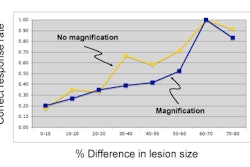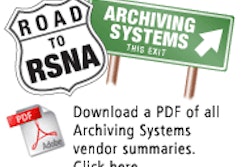While many radiology departments have transitioned to a largely filmless environment, quality control (QC) processes often remain paper-based. An open-source Web-based issue-reporting tool can help bridge the QC gap, according to research from the University of Maryland School of Medicine in Baltimore.
"As (radiology) hurtles faster and faster toward real-time dictation and reporting, radiologists and technologists can step on each other's toes," said Paul Nagy, Ph.D. "A paper-based system is insufficient to be able to handle your quality needs."
A sense of apathy can set in if QC issues aren't dealt with appropriately, he said.
If radiologists don't feel they're being responded to in time, they might not bother reporting issues, Nagy said. This may cause a lot of miscommunication between the radiologists and technologists, he added.
PACS has sterilized the relationships between radiologists and technologists in many ways, he said. There's no more film hanging, and not as much time for hallway conversations.
As a result, radiologists are no longer getting to know their technologists the way they were in previous years, Nagy said during a presentation at the 2007 RSNA meeting in Chicago.
In an attempt to break that barrier between radiologists and technologists, Nagy's institution decided to employ Radtracker, an open-source Web-based issue tracking system. The system, which can be launched from within a PACS application, sends an e-mail when an issue is submitted -- for example, to a technologist supervisor outfitted with a digital pager. When the supervisor has addressed the issue and resolved it, an e-mail is sent back to the radiologist.
"We tried to put a closed-loop support system between the radiologist and the technologist," Nagy said.
With Radtracker, the institution found that 40% of the issues reported using the system are resolved in an hour, and 75% of the issues are assigned a root cause. Of the 292,000 imaging procedures performed over one year, 2,472 (0.85%) QC issues were submitted, Nagy said.
For image quality, poor patient positioning was the most common root cause among the reported issues, contributing 228 (9%) of the cases. Another root cause was mismatches between the exams ordered and the ones that were performed, providing 174 (6.8%) of the cases. Poor image quality due to incorrect protocol was cited in 111 (4.4%) of the cases.
Other root causes included incomplete exams in RIS (111 cases, 4.4%), wrong patient demographics (102 cases, 4%), and missing images in the PACS (87 cases, 3.4%).
The system has also been utilized as a knowledge base of imaging errors for in-service training, Nagy said. This helps build a culture of quality in the department. The system can also be used for performance appraisals, providing actual documentation on technologist performance, he noted.
"While you'd think technologists might not like this, they actually do," Nagy said. "They prefer this than being yelled at by radiologists. This is constructive information; this is data-driven and problem-specific."
The system is also used to provide positive recognition for technologists who do a good job, he added.
By Erik L. Ridley
AuntMinnie.com staff writer
April 4, 2008
Related Reading
Buying a RIS/PACS for a distributed radiology practice requires careful planning, March 31, 2008
Planning eases PACS upgrade woes, vendor changes, March 27, 2008
Effective communication is crucial for radiology department success, March 20, 2008
Using informatics to meet communication challenges, February 7, 2008
High-tech communication tools improve patient care, studies find, December 6, 2007
Copyright © 2008 AuntMinnie.com



















